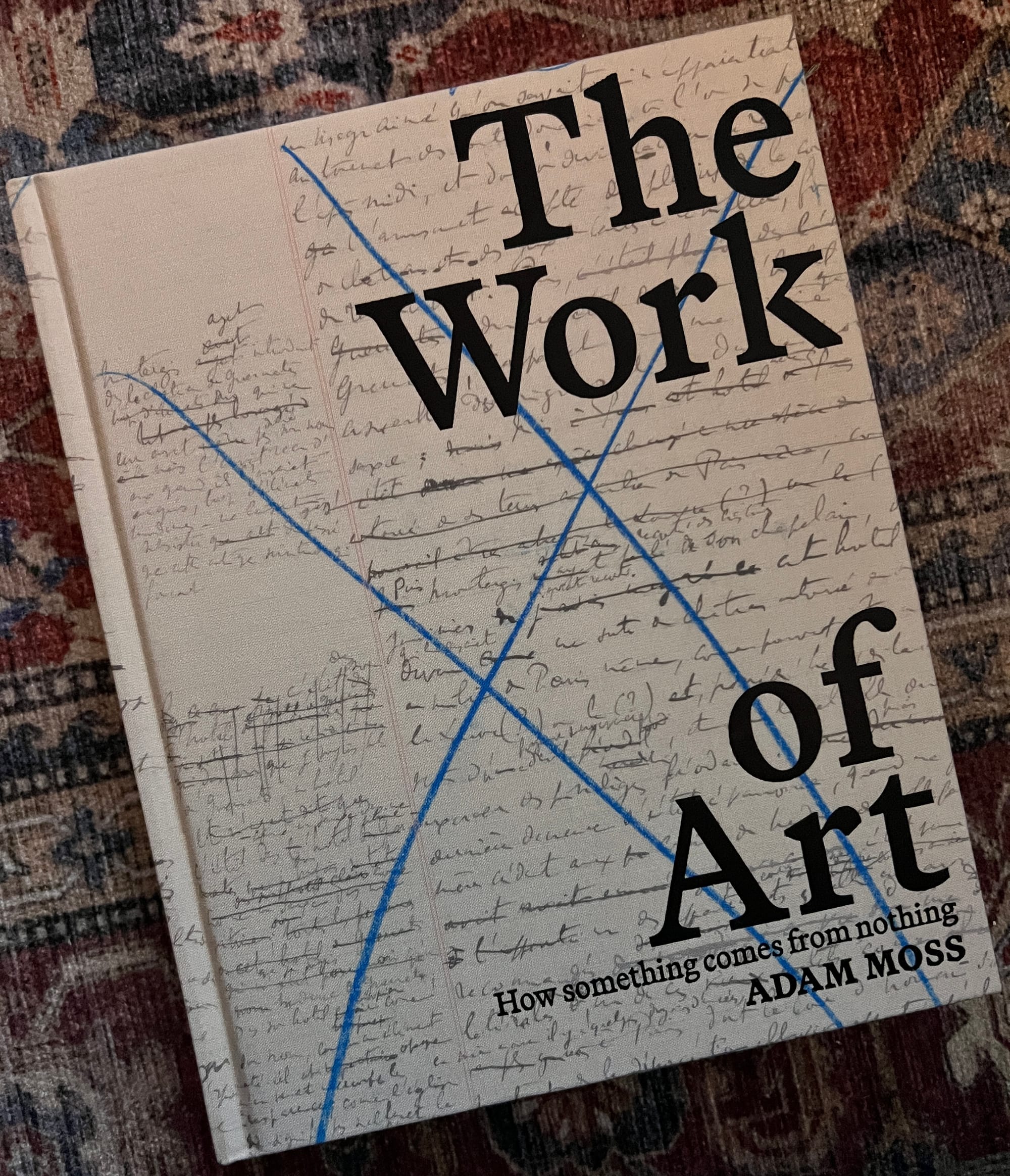'The Work of Art' Is A Work of Art
Adam Moss delivers a perfect book, plus why introductions are the best.
As promised, The Work of Art by Adam Moss was my latest book purchase.
Oh. My. God. What a beautiful book this is! Just look at it.

I can't wait to just luxuriate in its pages, with so many gorgeously rendered photos, and learn about the creative processes of 43 different artists, from writers and journalists to filmmakers, painters, and more.
I've read through the introduction so far, and I wanted to take a minute to express my love for introductions more generally.
Introductions, along with summaries on back covers and inside dust jackets to a lesser degree, are those parts of the book that hook the readers. Introductions, though, are in the author's own voice. It shows off their priorities and gives insight into what they think is worth leading with. It's a distinct talent to be able to write at a high enough level to properly introduce the entirety of the book and also be entertaining enough to make the reader want to keep going. It showcases a different skill from what's required to write the majority of the book, which prioritizes depth and getting lost in the weeds; introductions can show how well versed an author is in the subject and how he presents his case to the reader: "If you like this, you're going to love the rest of it." They're always one of my favorite parts of nonfiction books.
Moss does a great job setting the stage for the rest of the book, and it's nice how his introduction serves as a microcosm of the book's overall purpose: It outlines his creative inspiration and process. It showcased how the book would be organized, with its helpful red guiding lines to figures/drawings/photos. It benefited from Moss's magazine background, with an innovative layout that will no doubt be sustained throughout the book, and I loved its use of footnotes to articulate and memorialize some of his thoughts as he organized the book.
Comments